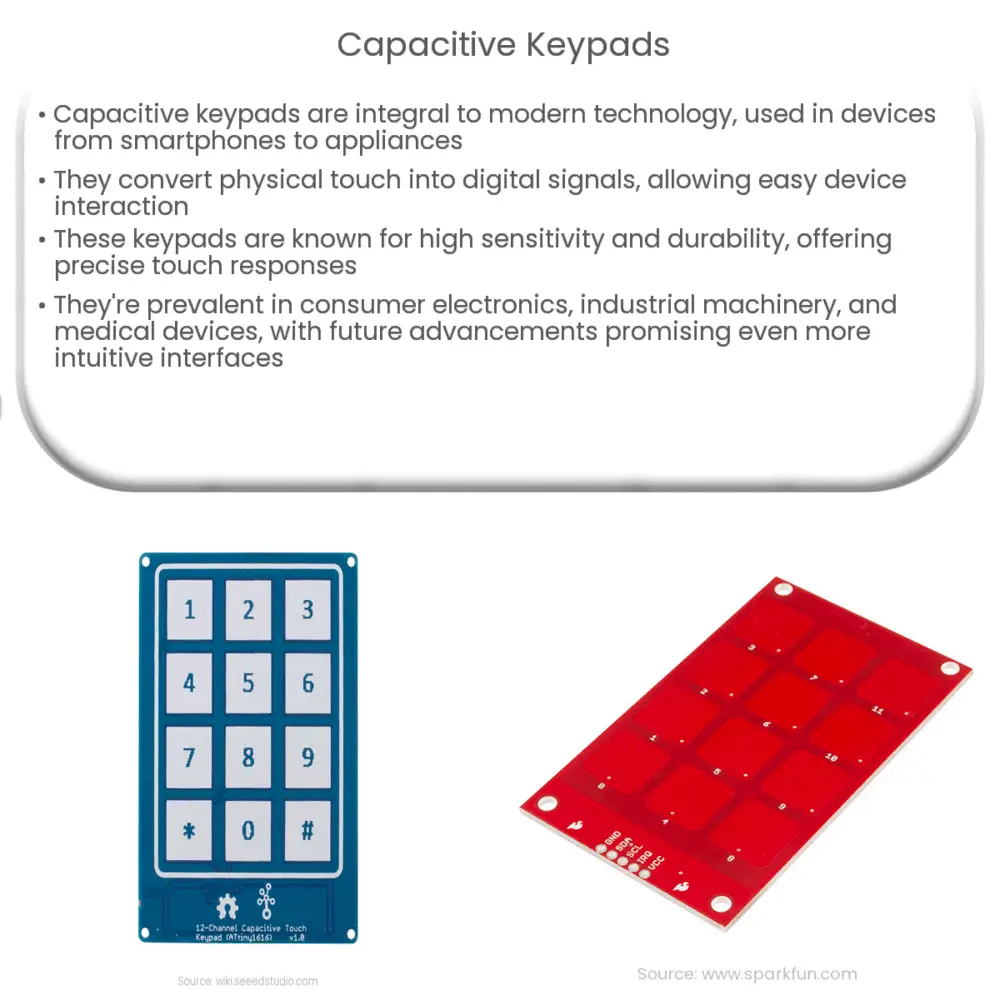Explore the world of capacitive keypads – their functionality, advantages, diverse applications, and future prospects in the digital era.

Introduction to Capacitive Keypads
Capacitive keypads are rapidly becoming a cornerstone of modern technology, influencing a wide range of devices from smartphones to home appliances. Their sleek design, durability, and superior functionality make them a preferred choice for many manufacturers and consumers alike.
What are Capacitive Keypads?
In the simplest terms, capacitive keypads are input devices that detect and measure anything that is conductive or has a dielectric different from air. This concept is harnessed to turn physical touch into a digital signal, allowing the user to interact with the device.
The Science Behind Capacitive Keypads
Understanding the functionality of capacitive keypads requires a basic knowledge of capacitance. Capacitance is the ability of a system to store an electric charge. In a capacitive keypad, this principle is used to detect changes in electrostatic fields.
- Surface Capacitive: This type of capacitive keypad uses sensors at the corners and a thin evenly distributed film across the surface to detect a touch. The sensors measure the capacitance on the screen. When a finger comes in contact with the screen, it changes the capacitance and identifies the touch point.
- Projected Capacitive: Unlike surface capacitive keypads, projected capacitive keypads have an XY grid array which allows multi-touch functionality. These keypads can detect and measure the capacitance at each point individually, thereby providing a more precise reading.
Advantages of Capacitive Keypads
- High Sensitivity: Capacitive keypads are known for their high sensitivity. They respond to the lightest touch, providing a seamless user experience. This is because the change in the electrostatic field, due to a slight touch, is enough to trigger the system.
- Durability: Unlike their resistive counterparts, capacitive keypads don’t require a direct force to register a touch. This means they wear out less frequently, providing a longer lifespan.
Capacitive keypads are undeniably an important part of our digital lives, not just because of their aesthetics, but also due to the precision and durability they offer. From smartphones to industrial applications, their utility is omnipresent and continues to evolve with advances in technology.[1]
Applications of Capacitive Keypads
Today, capacitive keypads are ubiquitous, finding their place in various sectors due to their superior properties and versatility.
- Consumer Electronics: Capacitive keypads dominate the world of consumer electronics. From smartphones and tablets to touchscreen laptops and smart home devices, these keypads provide the primary mode of interaction.
- Industrial Applications: Industrial machinery and equipment often use capacitive keypads due to their durability and reliability. They’re resistant to environmental factors such as moisture, dust, and extreme temperatures, making them ideal for challenging industrial settings.
- Medical Devices: In the medical field, capacitive keypads are used in a variety of devices such as diagnostic equipment, patient monitoring systems, and medical imaging devices. Their sensitivity and accuracy are critical in these high-stakes environments.
The Future of Capacitive Keypads
The future of capacitive keypads holds significant promise, with potential developments pointing towards even more intuitive and user-friendly interfaces. The advent of haptic feedback, which gives a tactile response when a key is pressed, is one such advancement that is set to redefine the user experience.
Furthermore, the incorporation of artificial intelligence and machine learning could lead to capacitive keypads that learn and adapt to individual user habits and preferences, heralding a new era of personalized technology.
Conclusion
In conclusion, capacitive keypads have revolutionized the way we interact with technology. By transforming physical touch into digital signals, they have made devices more intuitive and user-friendly. Their high sensitivity, durability, and wide range of applications testify to their importance in today’s digital age. As technology continues to advance, capacitive keypads will undoubtedly evolve to offer even more sophisticated and personalized user experiences.[2]

